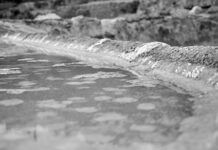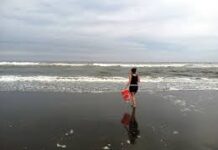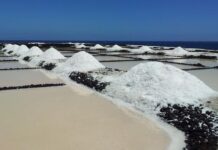So firstly what is mud or peloid therapy?

Mud therapy is the use of mud to heal the body.
Healing muds can consist of clays, peloids, silt, or peat pulps.
Higher quality muds are those which contain:
- MORE clay and humus
- but LESS sand, aluminium, and impurities such as heavy metals.
Muds which contain mainly sand are less suitable for mud therapies.
- Mud as an alternative medicine
- Is it safe to jump into a mud bath?
- Environmental issues
- Artificial peloids versus natural ones
- So what does mud therapy treat?
- DIY Instructions for application of sea mud at home!
- Contraindications of use of pelloids
- Concluding remarks..
Mud as an alternative medicine
In ancient time sea mud benefits were very well known and it was a panacea…….. a cure for all.
Mud has been used to treat a myriad of conditions:
- Skin conditions such as acne, eczema, psoriasis
- Joint problems such as tennis elbow, carpal tunnel syndrome
- Rheumatological conditions
- Back pain …….to name only a few
Mud cataplasms were even used to treat broken bones!
Muds come with various constituents
| Content | Suitable for: |
| High sulphur content mud | Skin conditions |
| High silt content and diatomaceous earth | Peeling mud |
| High magnesium content | Joint pain |
Muds can also naturally contain worms, some of them which can bite!
Is it safe to jump into a mud bath?
Seamud can have some harmful stuff in it:
- Heavy metals content in muds can be in certain cases high, such muds are not suitable for application.
- Organic pollutants are less common in sea mud and forest muds, but can be common in polluted estuary muds and river muds.
- Fish tapeworm eggs or proglottids can all be present in river muds or even estuary muds. Peat pulp and forest muds can contain nematodes.
- Silicate, aluminium and other minerals. Moist muds don’t pose a health risk to the lungs. However silicate particles from dry mud can be inhaled and can potentially lead to silicate-related lung diseases.
It is best to stay away from the use of muds close to industries, polluted river estuaries and areas with naturally high levels of heavy metals, radioactive rocks or asbestos containing rocks.
Environmental issues

Clay can take thousands of years to form naturally and it is important not to remove large amounts of sea mud as this can disrupt natural habitat of sea mud worms.
Artificial peloids versus natural ones
Natural peloids are being used much less frequently in spas than previous. Artificial peloids are becoming more popular instead.
Artificial peloids are not all that artificial as they use natural constituents but are refined and manipulated to contain the most therapeutic clays and have less harmful substances such as heavy metals. One study even showed that natural peloids used in Turkish spas contain high concentrations of arsenic, carbon, nickel and lead.(1,2)
So what does mud therapy treat?
1.Skin conditions such as acne

Peloid topical application to acne has shown to be effective for acne. (3)
Other studies(4) have shown that peloid mud application are useful to treat problematic skin conditions including skin infections with candida and rosacea.
Sea mud is a great remedy for:
- Blackheads
- Treating deep pimples and carbuncles
- Improving skin elasticity
- Minimizing skin pores.
- Exfoliating dead skin cells
- Absorbing toxins on the skin’s surface
2. Joint and rheumatological conditions
Studies(5) have also shown that dead sea muds are beneficial in several rheumatologic diseases and psoriasis and have a good safety profile.
Peloid treatment has been shown to be effective for both elbow joint inflammation as well as wrist pain (carpal tunnel syndrome).(6&7)
Chinese scientists have found that mudpacks can be beneficial in treating knee pain from osteoarthritis.
3. Back pain
Healing muds have also been studied(8) in the context of balneotherapy and found to significantly improve chronic low back pain, knee osteo-arthritis, and fibromyalgia.
4. Inflammation
Other research (9) shows that treatment with peloids can even decrease inflammatory markers in the body thus helping with many inflammatory conditions.
Studies (10) show that the best maturation process of peloids should make them moist and warm to allow the right microorganisms to develop This in effect gives the peloid its therapeutic effects such as the anti-inflammatory qualities.
DIY Instructions for application of sea mud at home!
- Apply a small layer of sea mud on the area to be treated. Avoid open wounds.
- Leave in for at least 10 minutes for very thin layers and up to 40 minutes for thicker layers of peloid.
- Wash away gently with water and soap.
- Thick layers of peloid can be peeled off first and placed into a biodegradable recycling bin to avoid blocking sinks.
Contraindications of use of pelloids
The use of peloids can be contraindicated in the following conditions:
- Open bleeding wounds
- Open abscess
Concluding remarks..
This ancient therapy is well worth trying, and is offered in several spas.
If you would like to learn about the benefits of seaweed then read our article here:
5 of Seaweed’s benefits for health.. and the hazards : to eat or not to eat?
References:
1.http://hidromed.org/hm/images/pdf/0377.BSEHM%202015_30(1)15-36_Gomes-C_Natural.pdf
2. https://dergipark.org.tr/tr/download/article-file/559440
4. https://journals.sagepub.com/doi/pdf/10.1177/1934578X1701200620
5. https://www.ncbi.nlm.nih.gov/pubmed/22503590
6. https://www.ncbi.nlm.nih.gov/pubmed/28620677#
7. https://www.ncbi.nlm.nih.gov/pubmed/28210859#
8. https://www.ncbi.nlm.nih.gov/pubmed/28644605
9. https://journals.viamedica.pl/forum_reumatologiczne/article/download/50447/41634



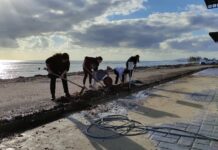

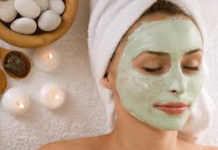
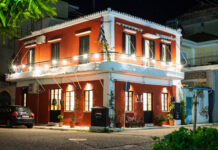


![Effect of sea mud compresses from Messolonghi lagoon as a treatment for cellulite [Experimental study]](https://saltandmud.gr/wp-content/uploads/2021/08/unnamed-218x150.png)
